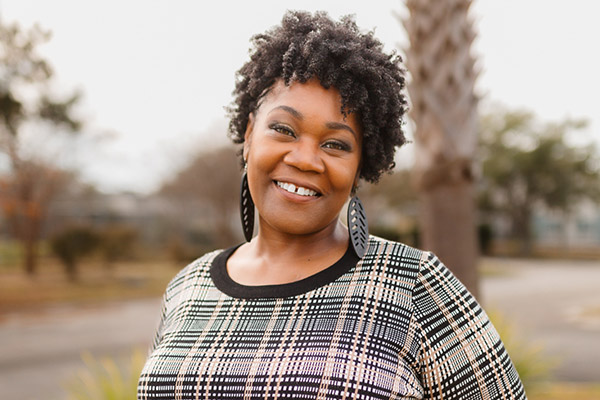07/16/2021

“There’s so much power in the very, very simple things.” Dr. Cynthia Price shares her “I Have a Client Who . . . ” story about a woman under treatment for substance use disorder, who is learning positive things about her body for the first time. It’s a beautiful story that will remind us about why we do this work. Plus, there’s information on how you can work with Dr. Price to do the kind of manual therapy that helps stressed clients find their way to positive awareness.



This podcast sponsored by:
About Anatomy Trains:
Anatomy Trains is a global leader in online anatomy education and also provides in-classroom certification programs for structural integration in the US, Canada, Australia, Europe, Japan, and China, as well as fresh-tissue cadaver dissection labs and weekend courses. The work of Anatomy Trains originated with founder Tom Myers, who mapped the human body into 13 myofascial meridians in his original book, currently in its fourth edition and translated into 12 languages. The principles of Anatomy Trains are used by osteopaths, physical therapists, bodyworkers, massage therapists, personal trainers, yoga, Pilates, Gyrotonics, and other body-minded manual therapists and movement professionals. Anatomy Trains inspires these practitioners to work with holistic anatomy in treating system-wide patterns to provide improved client outcomes in terms of structure and function.
Website: anatomytrains.com
Email: info@anatomytrains.com
Facebook: facebook.com/AnatomyTrains
Instagram: instagram.com/anatomytrainsofficial
YouTube: www.youtube.com/channel/UC2g6TOEFrX4b-CigknssKHA
Mindful Awareness in Body-Oriented Therapy
Want to learn how to teach clients fundamental strategies for accessing and sustaining mindful interoceptive attention in order to enhance client embodiment, self-awareness, and emotion regulation? The nonprofit Center for Mindful Body Awareness offers a professional training for therapists who work somatically with clients (e.g., massage therapists, psychotherapists, occupational therapists, yoga therapists, nurse practitioners, etc.). Based on strategies from evidence-based approach Mindful Awareness in Body-Oriented Therapy (MABT), this training is focused on fundamental skills that develop and increase client capacity for interoceptive awareness. The MABT approach is particularly helpful for clients who are disconnected from their bodies due to high stress or patterns of experiential avoidance, chronic pain, or trauma. The Liberated Body podcast interview is a great way to learn about the MABT approach, as are these links to learn about this approach, the training, and MABT research.
The next professional training is September 12–18, 2021, at the Whidbey Institute in Washington State; click here for details and registration.
0:00:00.0 Speaker 1: Ruth Werner's best-selling book "A Massage Therapist's Guide to Pathology" is a highly regarded comprehensive resource that sets the standard for pathology education. Written for massage therapy students and practitioners, this ground-breaking resource serves up a comprehensive review of the pathophysiology, signs, symptoms, and treatment of more than 500 diseases and disorders. Learn more at booksofdiscovery.com.
[music]
0:00:32.0 Speaker 2: Anatomy Trains is happy to announce our return to the dissection lab in person, January 10th to the 14th, 2022 at the laboratory of Anatomical Enlightenment in Boulder, Colorado. We are thrilled to be back in the lab with Anatomy Trains author Tom Myers and master dissector Todd Garcia. Join students from around the world and from all types of manual, movement, and fitness professions to explore the real human form, not the images you get from books. This is an exclusive invitation. Email info@anatomytrains.com if you'd like to join us in the lab.
[music]
0:01:16.8 Ruth Werner: Hi, and welcome to "I Have a Client Who," pathology conversations with Ruth Werner. The podcast where I will discuss your real life stories about clients with conditions that are perplexing or confusing. I'm Ruth Werner, author of "A Massage Therapist's Guide to Pathology," and I have spent decades studying, writing about, and teaching about where massage therapy intersects with diseases and conditions that might limit our client's health. We almost always have something good to offer even with our most challenged clients, but we need to figure out a way to do that safely, effectively, and within our scope of practice. And sometimes, as we have all learned, that is harder than it looks. Today on "I Have a Client Who," we have a really special experience I am honoured to share with you. My friend, Dr. Cynthia Price, who has a terrific thing to bring to us. Dr. Price, Cynthia, would you like to just introduce yourself a bit please?
0:02:20.9 Cynthia Price: Sure. Great to be with you today, Ruth. So I'm a research professor at the University of Washington, and I do bodywork-related research and have been for quite a number of years. I was in private practice as a massage therapist for 20 years before becoming a researcher. So my research is largely focused on working with people who are in substance use disorder treatment and I have a story related to that.
0:02:51.4 RW: A few weeks ago, you and I were talking about a project that you're working on that is relevant for massage therapists, and I will share information about that at the end. But in the course of that conversation, you told me about this client that you're working with. And to set this up, I will just say to people that, that if you've done any work with me in the past, if you've done any workshops with me, very likely you've heard me talk about Dr. Price and her work, looking at bodywork as a way to improve or help people learn about themselves in the sense of interoception. And that's relevant to the story that you're gonna tell us today, so tell us about your, "I Have a Client Who."
0:03:30.8 CP: So this particular client that I'm working with, and I normally wouldn't, but in my research study, we needed me to fill in. We're doing a study for people who are in treatment for opioid use disorder. So she has an opiod use disorder and she's receiving medication for that, Buprenorphine or Suboxone, and that is what has allowed her to be in this study. So this woman is 30 years old and she was using heroin for 10 years, so she was addicted to heroin for 10 years. And she was actually living on the streets since she was 15, so half of her life. And she said to me, she said, "You know, I really wanted to stop using, but I just couldn't figure out how." And what happened was she ended up getting pregnant and almost... Just barely have realised she was pregnant, really, and went into labour. And so she found herself in detox in the hospital with a preemie, a very, very early baby, and spent months in the hospital. So that's how she ended up in this situation where she got into treatment, medication treatment, and has come to us in this way. But in our work together, we're focused on her developing her awareness of her body and paying attention to what she notices, and that's a lot of what we do.
0:05:05.1 CP: And so she came in, in her first session, and she said, "Well, you know, I've been living on the street, so I've been sleeping on sidewalks, so my body's kind of a mess. And I'm tense as can be and I know that, but I don't really know anything else. I don't know how I feel. I don't know, you know, I [0:05:21.9] ____ been paying attention for all these years." And she said, "But I'm kinda curious." She was very, very interested in being in these sessions. So we started out by just doing a lot of massage and having the person pay attention to what they notice and how they would describe how they feel in response to places, for example, that are really tight. So sure enough, she's extraordinarily tight everywhere, lots and lots of muscle tension. But the thing that was most surprising to her in this first session, for example, was how tight her feet were. Her feet were like solid blocks, they... There aren't very many people's feet I've felt that are so tight that they kind of just wanna raise off the table, that's when you touch their feet. And, so I don't know why, there's nothing particular about her that would explain that, that I could tell, but anyway... So she was extremely motivated at the end of this session. We'd talk about what would she like to practice for self-care and more awareness of her body in the week before I saw her next.
0:06:36.6 CP: So her choice was to do a foot massage. Well, it turns out over the last many weeks, she is so motivated to work on her feet that she's working 20 to 30 minutes a day, twice a day, massaging her feet. Her feet do not feel at all like the feet that I touched, that very first. And it's something she can easily do while her baby's sleeping and she's just hanging out and she feels really comfortable massaging her feet. I think she's noticing that her whole body is more relaxed, and it is, and her feet have totally changed. So that was the first thing that was just very interesting. This person is so happy to be alive, so happy to have this baby, so happy to be getting a lot of support that she's never had in her adult life, and very, very motivated to pay attention and feel better.
0:07:37.2 CP: So in the subsequent sessions we've had together, she's really worked on softening with her mind, just bring her attention into the places that are really tight. She's learning to work with her breath, to relax and to bring her breath into areas of her body. Every single thing we're doing is new. She's never ever experienced anything like it, but she's also really, it's coming easily to her. Some people, it's not. They're pretty disconnected from their bodies, and there's a lot of layers of... They're anxious or concerned about getting in touch, and she's not one of those people, so she can just jump in with two feet in this sweet way. So that's my initial story about this person and the value of her getting touched and learning that she can engage in self-care in very simple ways that help her feel better.
0:08:44.9 RW: To me, that's just a really inspiring story about what touch can do, but also about her courage. If I were in her place or if I were her therapist, I would have some real fears or concerns about why she's blocked sensation in her, or why she's blocked any mobility in her feet or whatever, or that there are things that are being guarded or protected that are sure none of my business to uncover, and so I just wanna applaud the courage of both of you for moving toward that unknown, because it sounds like she's really eager to get to know herself in a positive way.
0:09:32.4 CP: You see this with people who are relatively new in treatment, especially where it's been six months, where their lives have just turned upside down in a positive way and they're so ready. They're so ready and they're so grateful. And she's one of those that yes, it's like anything and everything is taken in and she's ready to learn and use whatever she can to help herself. So another wonderful thing that happened that she talked about, which is a little off the straight ahead massage kind of story, but it's related to what's happening in these sessions or what she's doing with them is she said to me, 'cause I always ask at the beginning of the session, "How are you doing? How are you feeling emotionally? How are you doing with your homework? Blah, blah, blah." And she said, "Well you know, I'm taking more time when something's bothering me to not just get bothered about it, but to' do something about it," and this has not been something that had come up in a session, but it seemed to be for her associated with what it could have been, but it wasn't. It just naturally hadn't come up. But you think like she was making this connection between, "Oh, I'm paying attention to how I feel in this simple way with my feet, with my back, with my muscular tension", but she's making that leap without us even doing it together, all on her own. She's making that leap to, "Oh, well there could be other ways in which I'm bothered. I could be more anxious or I can... "
0:11:25.2 CP: So example, what happened was we had this huge heat wave here in the northwest, and she was worried about her old compatriots who were on the streets, and she was thinking about them and she was worried about them, and she was like, "I didn't know what to do when I was feeling anxious and upset," and then she said, "And then I realised, well, I could just reach out to them. I have their phone numbers, I could find out if they're doing anything. I could take them food. I could... " And she said, "And I felt so much better because I was actually doing something." And it was this lovely story, but it's all to me related about to regulation, how does she help herself? What does she notice about how she's doing and how can she in various ways and different parts of her life engage in ways that are healthier for her? And so this was just another side story about that process.
0:12:26.2 RW: Wonderful, wonderful. And not directly linked specifically to massage therapy, but probably at least peripherally linked to the opportunity that massage provides for people to get to know themselves better.
0:12:40.1 CP: Exactly, pay attention, right?
0:12:42.1 RW: Right. And on that line, I would like to just say, so what Dr. Price and I were talking about a few weeks ago was a wonderful opportunity coming up to learn how to teach clients fundamental strategies for accessing and sustaining mindful intro-acceptive attention in order to enhance client embodiment, self-awareness, and emotional regulation. And so Cynthia's group, the non-profit centre for mindful body awareness offers a professional training for therapists, including massage therapists and others, based on strategies from an evidence-based approach called mindful awareness and body-oriented therapy. It's a terrific opportunity coming up, and I will have more information about that in our show notes. I believe that the work you're doing reveals things about massage therapy that are gonna be really important for us to be knowledgeable about so that we can use these skills on purpose instead of by accident, so that we can get to those best kinds of outcomes.
0:13:47.2 CP: Yeah, yeah. Thank you Ruth. I think there is so much power in the very, very simple, simple things and this is a good example.
0:13:56.6 RW: I love that and I will use that for the title. [laughter] Thank you so much, Cynthia. And thanks everybody for listening to another episode of "I have a client who... "





